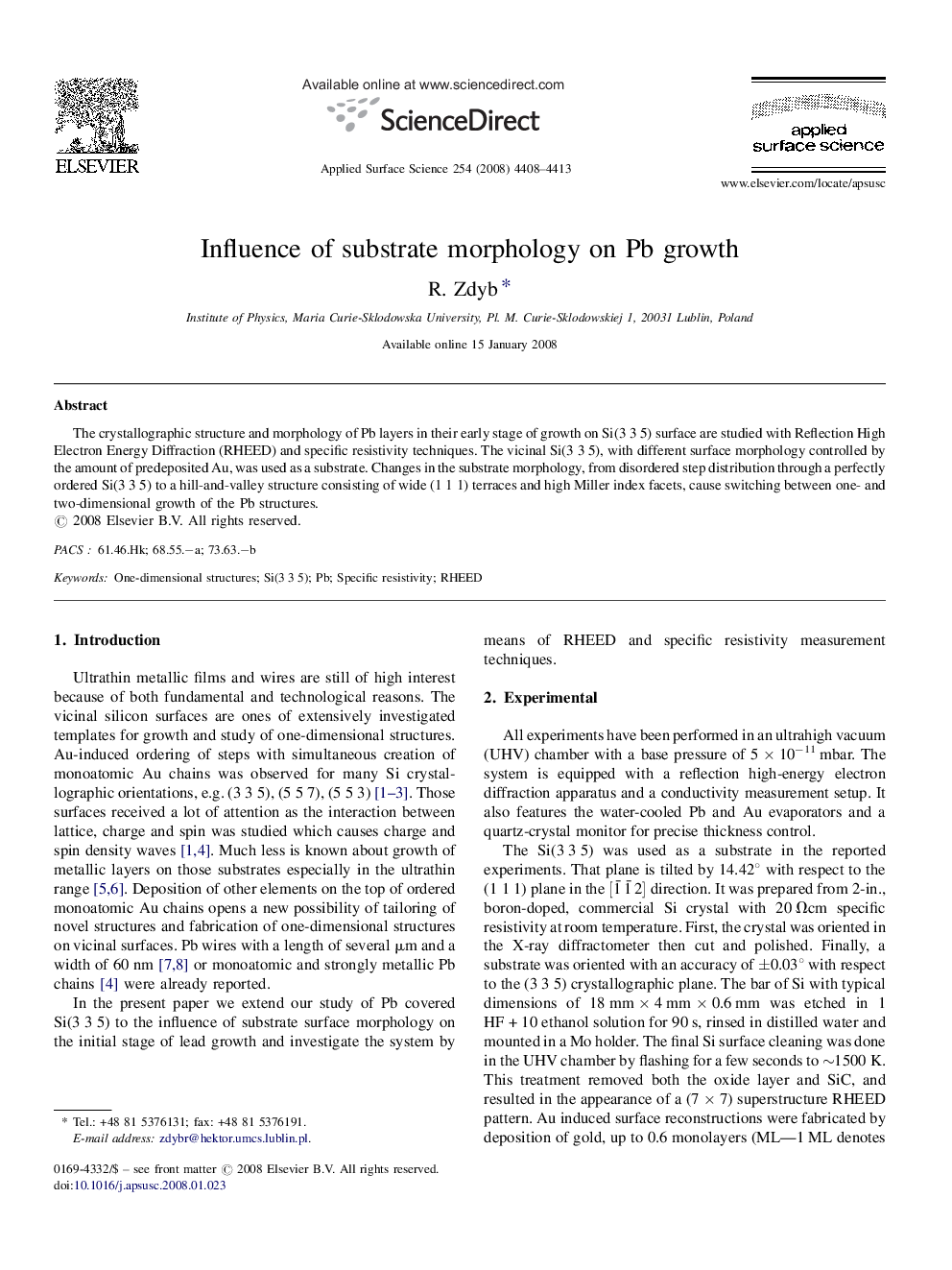| Article ID | Journal | Published Year | Pages | File Type |
|---|---|---|---|---|
| 5364266 | Applied Surface Science | 2008 | 6 Pages |
Abstract
The crystallographic structure and morphology of Pb layers in their early stage of growth on Si(3Â 3Â 5) surface are studied with Reflection High Electron Energy Diffraction (RHEED) and specific resistivity techniques. The vicinal Si(3Â 3Â 5), with different surface morphology controlled by the amount of predeposited Au, was used as a substrate. Changes in the substrate morphology, from disordered step distribution through a perfectly ordered Si(3Â 3Â 5) to a hill-and-valley structure consisting of wide (1Â 1Â 1) terraces and high Miller index facets, cause switching between one- and two-dimensional growth of the Pb structures.
Related Topics
Physical Sciences and Engineering
Chemistry
Physical and Theoretical Chemistry
Authors
R. Zdyb,
